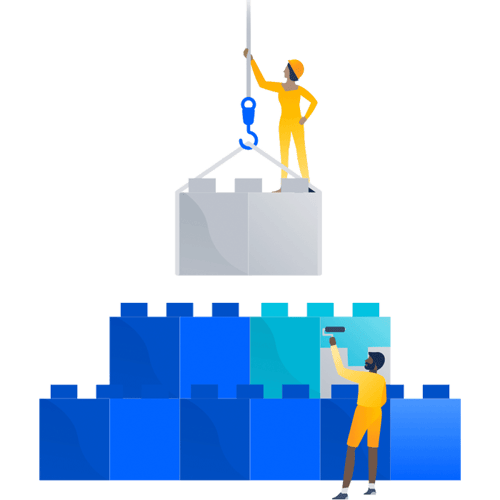What truly transforms an organization, culture or tools?
Your team sits around the table facing each other with arms crossed. Everyone agrees that they need to break down silos and collaborate between teams. Leadership has been supportive, but something is off. Nobody is communicating, and work isn’t getting done quickly. Why?
You’ve already adopted an agile environment and embraced the business-altering power of DevOps with incredible new tools and a changed workflow. You recognize that DevOps has revolutionized the way many companies do business. It streamlines operational processes by aligning development and operations teams and allows you to maximize the predictability and sustainability of production processes, enable greater agility, and trim unnecessary fat from the IT operation.
Yet, you’re still missing the key ingredient to your team’s ability to work quickly, effectively, and together.

In practice, DevOps is a collection of tools that can change the way your team works together. But in the beginning, it should have little to do with the tools and more to do with your people. In their haste to adopt DevOps, many organizations skip business cultural considerations and focus intensively on getting the newest, flashiest, “best” tools around. Only, DevOps isn’t just about tools. It’s about overhauling how an agile team evaluates and thinks about work. It elevates humans over technology and without DevOps the chance that your overhaul misses the mark increases.
Elevate Culture Over Tools
Organizational culture shapes the everyday interactions of a team. It also shapes brand identity and helps attract and retain employees. DevOps culture values communication and collaboration between development, operations and any other staff involved in creating a product or service. Tools enable this new way of working, but they cannot replace valuable, interpersonal experiences.

Eventually, tools will always need to be updated and/or replaced, but culture is pervasive across your organization and intertwined with daily work life. Incrementally developing DevOps culture before focusing on tools can help a team transition from working in silos to collective participation and productivity.
In DevOps culture, every action is about making the development and creative process iterative and more collaborative. Sure, development and deployment work are synced, allowing for faster delivery on products and features. And developers have the opportunity to get more creative working on the projects in front of them, accomplishing double the work of lower-performing teams stuck using legacy development models. But fundamentally, DevOps culture is about allowing for teamwork and communication supported by tools, making data-driven decisions and measurable results a part of the everyday process.
Although transitioning your culture takes strong leadership and a time commitment, it’s essential for an agile work environment. Without complete organizational buy-in to the cultural shift that comes with DevOps, you run the risk of devaluing the tools your team owns and minimizing the gains you might otherwise achieve through DevOps. Building DevOps into your organizational culture is not only good for the team, it’s good for business.
Here are a few helpful tips for making the transition the right way.
3 Steps for Building DevOps Culture
1. Define Your Company’s Objectives. A team can only work together if they know their roles, responsibilities, and the overall goals they are collectively trying to reach. Share the organizational goals and then break them down into direct involvement and responsibilities for each team member. Make this the first step in the roadmap to share where the organization is headed and how people are important along the way.
2. Encourage Communication. More communication means more teamwork and collaboration across teams. This is especially important when it comes to cross-unit sharing. Allow for quick, informal meetings and foster an environment where people are able to brainstorm for solutions. DevOps should be a human-driven driven process with tools taking a back-seat to team member’s interactions.
3. Standardize Retrospectives. In a collaborative environment, reviewing what went right, what went wrong and how to improve is crucial. Agile teams already do this at the end of their sprints, but it must become an integral part of the larger organization as well. Make this an essential part of your culture before you’ve deployed DevOps tools, which will help the transition and training go even more smoothly.
These three steps are the launchpad for a DevOps culture that will increase efficiency, team-work and delivery in your organization. Instead of sitting across the table at an uncomfortable impasse, your team will understand where they’ve been, where they’re going, and their specific role in the journey along the way.
Contact our experts today to learn more about how ServiceRocket’s business advisory and consulting solutions can help transform your culture and your business.

